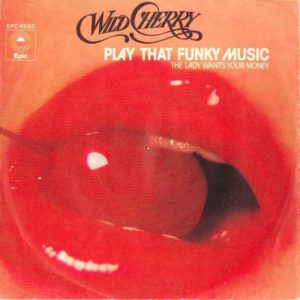- in Instrumental Track , Production , Video by Bobby Owsinski
- |
- 1 comments
Wild Cherry “Play That Funky Music” Isolated Vocal
 So many of you really like these Friday isolated tracks, but I’ve recently had some comments like, “Why do you keep posting old songs?” Fair enough question, and there are 3 reasons.
So many of you really like these Friday isolated tracks, but I’ve recently had some comments like, “Why do you keep posting old songs?” Fair enough question, and there are 3 reasons.
1. Plain and simple, the isolated tracks are much more available for older classic tracks than new ones, which are much more closely guarded by labels, artists and producers.
2. More people know the songs. Even if you weren’t born when some of these songs were recorded, you still know them because you’ve heard them on the radio, in movies or on commercials (probably over and over).
3. They present a great learning opportunity. Today’s tracks are scrubbed upside down so they’re perfect, but hits of the past were pretty raw in comparison. They were still hits anyway, so listening to an isolated track with imperfections can be a great lesson on just what’s important when it comes to a hit (hint: it’s performance, not perfection).
With all that said, today’s isolated track we’ve heard a lot through the years. If you lived through the disco era, it represented a sort of surrender of the rockers to a new trend that was taking over at the time. Here’s the isolated vocal track from Wild Cherry’s “Play That Funky Music.”
The story behind it is that Wild Cherry frontman Rob Parissi wanted to write a hit song, and decided to copy a hit, but make it just enough different to avoid getting sued. The #1 song at the time was “Fire” by The Ohio Players, and that was the inspiration for “Play That Funky Music.” The title came from a real life situation where a black audience member shouted, “Play some funky music, white boy,” while the hard rock band played a gig. Here’s what to listen for.
1. Listen for the cowbell on the intro, B sections and chorus on the right channel. You’ll also hear handclaps on the B and chorus sections.
2. The vocal is pretty squashed and has a medium decay delayed plate effect that gives the vocal ambience yet it still sounds dry if you don’t listen closely.
3. Listen for the stereo horn replies after the verse phrases. Sometimes there’s just a baritone sax on the left and trumpets on the right, and sometimes they’re spread in stereo.
4. Unison stereo background vocals are introduced in the B sections and choruses.
5. You can hear the two rhythm guitars spread left and right during the solo at 2:42.
6. You usually don’t hear the 3 part harmonies on the outro at 4:00 onward because the song is faded by then.

